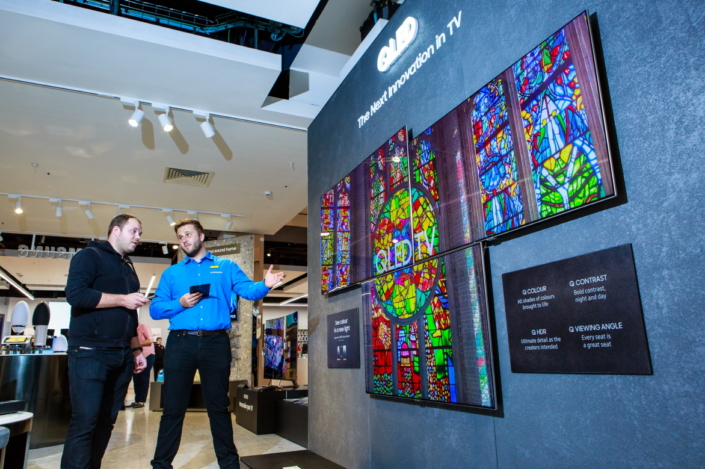THIS IS QLED TV, Part 2: Winning the Top 5%
on June 2, 2017
Today’s global TV market is simply massive. Each year, manufacturers around the world produce a wide range of TVs that collectively exceed some 200 million units. Although the high-end TV category accounts for just five percent of that yearly total (a little more than 10 million units), it also represents the corner of the market that TV manufacturers focus on the most.
For example, when most manufacturers showcase their wares at CES, the world’s biggest consumer electronics tradeshow, they highlight offerings that target the premium segment of the TV market. But why exactly do TV manufacturers compete so fiercely to cater to such a small selection of consumers?
Premium TVs: A Golden Goose for Manufacturers

Although premium TVs account for just five percent of global sales, for many manufacturers they are a golden goose, accounting for roughly 20 percent of total revenue and 40 percent of total profits. In other words, if a manufacturer was to lose ground in premium TVs, it would most likely lose out on the entire market.
Just three years ago, most TVs targeted at the premium sector carried price tags of over $1,500. Today, fierce competition has lowered prices, which means consumers can easily find premium TVs at a base price for $1,200. Don’t let the markdowns fool you, though; premium TVs are still, on average, more than twice the price of most TVs on the market.
A Leader in the Premium Sector

Over the past several years, Samsung Electronics has established itself as a leader in premium TV innovations. This year’s launch of QLED TV, Samsung’s flagship TV line, will reinforce its position as a leader in this area.
Last year, Samsung accounted for 47 percent of sales of TVs priced at over $1,500, and 48 percent of TVs priced at over $1,200, respectively. In other words, Samsung products represent half of the total number of premium TVs in the global market today.
In addition, in the first quarter of this year, Samsung recorded a 60 percent share in the US market for TVs priced at over $1,500, which is higher than the respective shares of all of its competitors combined.
Samsung’s position is solid in European market as well, where it garnered a market share of over 40 percent during the same period. The company has also firmly established its position as a leading manufacturer of premium TVs in China, the largest market in the world. There, four out of ten premium TVs sold in the first quarter of this year were produced by Samsung.
Samsung’s New Flagship TVs
What exactly do premium TVs offer? Well, along with a high price tag, today’s high-end TVs typically feature UHD (Ultra High Definition) resolution and measure over 60 inches across.
Samsung also leads the markets for UHD and widescreen TVs – a position that is even more evident when it comes to 65- and 75-inch widescreens. In fact, last year, Samsung products accounted for well over 40 percent of the global sales of TVs measuring over 60 inches.
In accordance with the widescreen TV trend, Samsung has launched two 75-inch QLED TVs in the US, Europe, China and Korea.

The curved Q8 offers an immersive viewing experience, coming with a full metal body and offering its audience a crisp, comfortable view (at any angle) that only a premium TV can offer.
The back of the flat screen Q7 features a natural, wavy pattern, and its body reflects contemporary, minimalist aesthetics. The bezel-less design and clean back look great whether mounted on the wall or positioned on a stand, and offer viewers an excellent viewing experience either way.
“The Q8 and Q7 are our flagship products that have combined one of the most advanced TV technologies in the current era and minimalist design,” said Moonsoo Kim, Senior Executive Vice President of Samsung Electronics’ Visual Display Business. “The two will make it clear, in the global TV market, that a premium TV means Samsung, and we are excited about that.”





